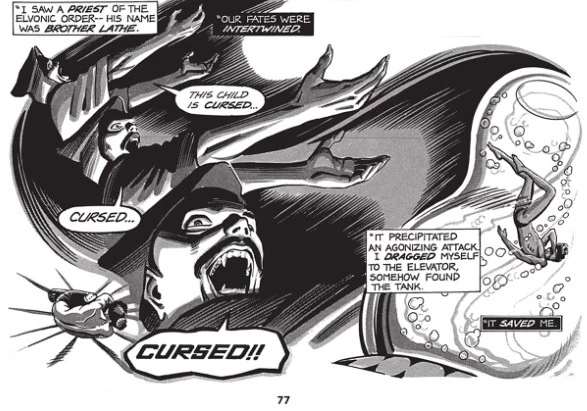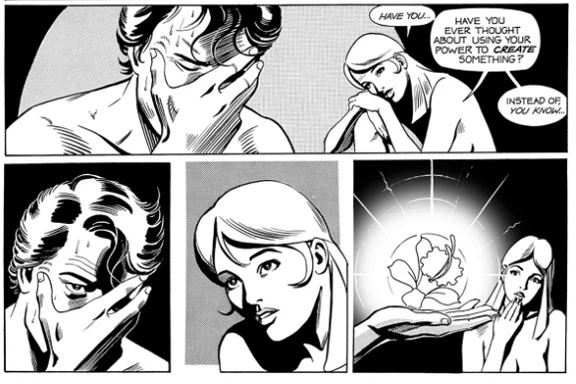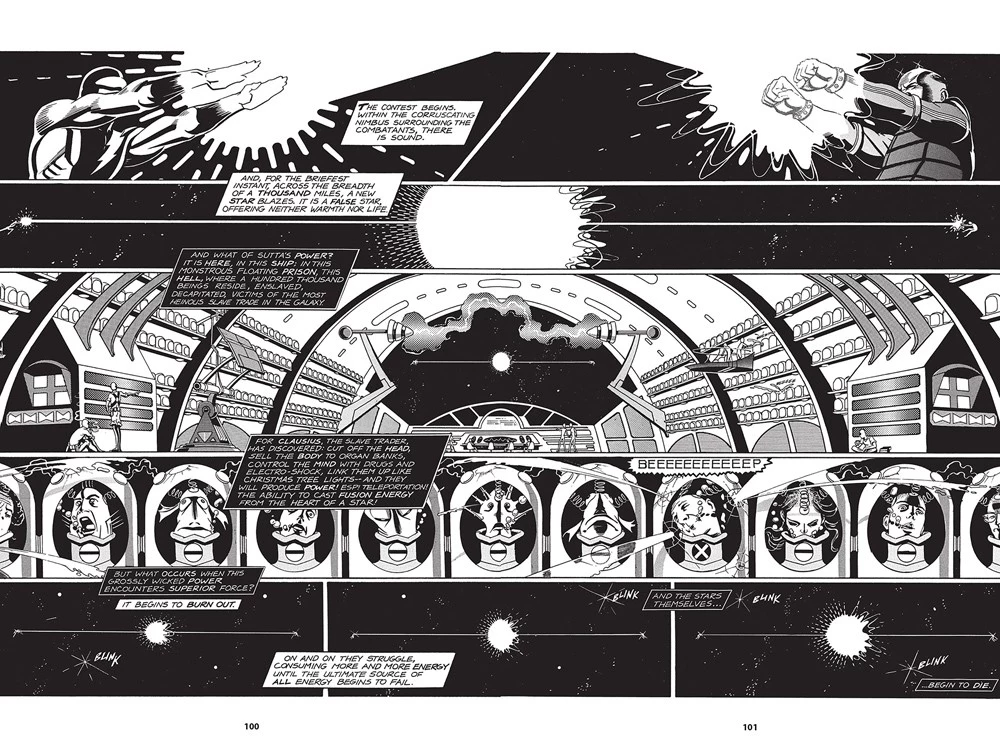![Mike Baron and Steve Rude’s ‘Nexus': Exploding Preconceptions Since 1981 [Review]](http://townsquare.media/site/622/files/2013/01/untitled-1-1357605901.jpg?w=980&q=75)
Mike Baron and Steve Rude’s ‘Nexus': Exploding Preconceptions Since 1981 [Review]

"I begins and ends with Andrew Loomis," Steve Rude wrote in a 1989 collection of his sketches published by Kitchen Sink Press. "Loomis takes the best qualities, whatever sexual, sensual qualities that men respond to in women and refines that to a laser's focus." Rude learned to draw by copying Loomis. And by copying Jack Kirby. And Alex Toth. And Paul Gulacy. And he didn't stop there. Rude's sketchbooks are filled with layout studies and color experiments and tonal variations, but mostly they are filled with figures, drawn from looking at the work of illustration and comic book masters in his early years, and increasingly filled with life drawings as time progressed.
But you don't have to track down Steve Rude's sketchbooks to see that development -- or the influence of the great artists of the past -- because it's embedded within every page of Nexus, the 32-year-old comic book series that has received a bit of a resurrection in the past year, with some appearances in Dark Horse Presents and a new cycle of reprinting as part of the compact-but-thick Dark Horse Omnibus line. It's hard to imagine a more powerful dose of thrillingly weird sci-fi superhero tragicomedy pathos than you'll find in those first few years of Nexus comics. Steve Rude may provide the visual juice, which is more than ample, but writer Mike Baron provides the angered broken heart that powers the narrative about Horatio Hellpop, the galactic prince cursed to dream of murderers and despots until he's compelled to execute them else lose the power -- and sanity-- needed to protect the people under his care.
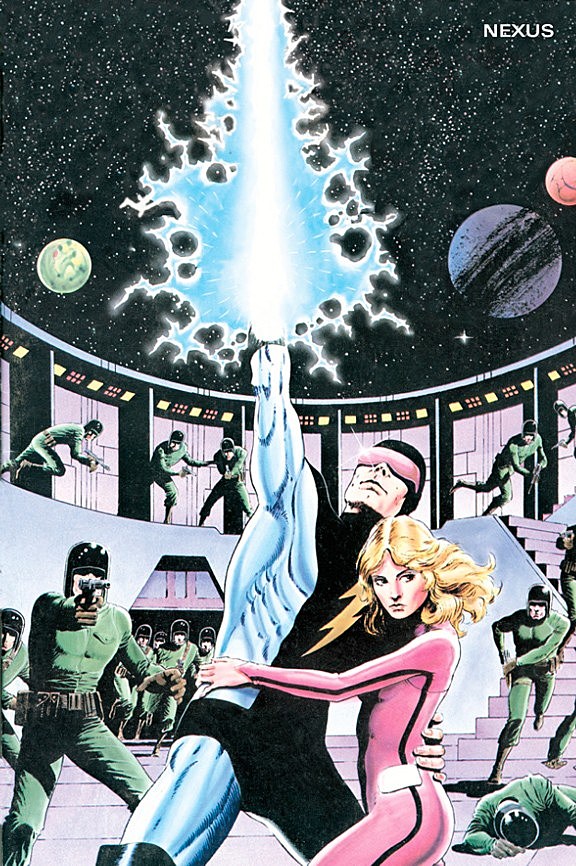
If we focus just on the first 14 issues of Nexus -- which spans the first three black-and-white magazine-sized issues and the first eleven issues of the ongoing series initially published by Capital Comics and then taken over by First Comics with issue #7, conveniently packaged together in the Omnibus edition – we find the core of the series immediately established with a keen focus, but we can also see the range and variety of the storytelling. Nexus is a book about a cosmic space executioner, but if you had never heard of Nexus before, and you pictured what a "cosmic space executioner" series would look like, and what stories you might find on its pages, you would never imagine anything like what Mike Baron and Steve Rude deliver. They not only take the concept in unexpected directions, almost immediately, but they do so in a way that enriches the central ideas of the story.
Nexus is not "The Punisher in space." Not even close.
So what is Nexus? It's plenty.

It's the story of Horatio Hellpop, lonely son of a mass-murderer, living in a kind of self-imposed exile on the planet Ylum (pronounced "eye-lum"). Hellpop is the "Nexus" of the title, a costumed executioner who kills because he must. His nightmares torment him, and identify his next target (and his targets are mass-murderers themselves). His only relief is found in killing the killers, exploring the strange archeology beneath the surface of Ylum, which he eventually opens as a haven for interstellar refugees, and spending time with his beloved Sundra Peale.
It's the story of Judah Maccabbee, the self-styled "Hammer of God," a musclebound Dr. Seussian sword-wielding Thune who patterned himself after the great Nexus, and soon becomes the title character's most trusted ally.
It's the story of Dave, Judah's thought-lost father, and his dignified attempts to do what's right for his friends and neighbors. Dave the Thune acts as the wise moral compass for much of the series.
It's the story of Sundra Peale, Horatio's lover, a young woman who quickly falls into what seems to be a subordinate role but has more hidden depths that we first realize. And it's the tory of Ursula XX Imada, nefarious spy and seductress. And it's the story of Tyrone the refugee-turned-politico. And it's the story of Clonezone "the Hilariator" who is not at all hilarious, no matter (or because of) how hard he tries. And it's the story of Ylum itself, and the mystical energy forces at play beneath the world, and the social forces at play on its surface.


But most of all, it's the story of Mike Baron and Steve Rude exploring a beautiful and strange reality of their own making, seemingly unconcerned with living up to any preconceived notions about what a series about a cosmic space executioner should be like. They consistently defy expectations in their first 14 issues, even when the expectations we might have are the ones established by earlier issues. It's exciting to see that happen.
Admittedly, the first three issues of the black-and-white Capital magazine series are raw. Steve Rude has ambition and talent, visible on the page, but his characters have a posed stiffness and his backgrounds are ill-defined, particularly in the first issue. After a few issues, beginning-Rude begins to more closely resemble proto-Rude, and by the time the Capital Comics issues transition into First Comics issues, Steve "The Dude" Rude emerges as a pure force of comic book artistry -- a journey the reader witnesses in the span of this single Dark Horse omnibus. Rude's dynamic layouts and whimsical backdrops and sleek figures and beautiful contrasts make Nexus look amazing for years to come.
So there's that artistic progress to marvel at, and appreciate, as a definitive statement of "this is what comics can look like." But even if that rapid acceleration of artistic progress is notable, even thrilling, that's somewhat predictable. Young artists get better as they produce more work, even if few artists in the history of comics have ever been as impressive as quickly as Steve Rude. So where are the surprises then? The defied expectations?

A better set of questions would be: "where aren't the surprises?" "When are expectations not defied?" Because from the beginning, Nexus does not give us the Syd-Field-or-Robert-McKee structure that harkens back to Aristotle's Poetics and provides a neatly prescribed, clearly outlined story arc. It does that in pieces, and Mike Baron establishes long-term subplots (some of which, as in the case of Ursula XX Imada, will literally grow over the course of several years and gain a life all their own), but what remains refreshing about Nexus, above and beyond how terrifyingly beautiful it looks once Rude finds his line, is that the mystery and exploration of its own universe becomes the immersive experience that drives the reader from issue to issue. It's not a matter of "how will this conflict be resolved in a traditional, comforting way?" as much as it's a matter of "what new conflict is in this weird wormhole over here and what will we find when we get there and then how will we get out of it?" Nexus tends toward that latter question far more than the former. It's exploratory. It's curious.
And that makes it come alive.

Characters lose their heads, and regain them. Space station nightclub hecklers turn riotous. A gravity well leads to a dimensional rift controlled by a one-eyed flying manta ray. A slugfest gives way to a rhyme battle. And amidst it all is Nexus himself, the executioner, trying to make sense out of the universe and find a sliver of peace.
Steve Rude began his career by learning from artists of the past, but in collaboration with Mike Baron he created something unique for its time, never since duplicated. It's wonderful to see the original series returning in the Omnibus format, available for a new generation of readers to learn from, even if Nexus always was, and always will be, one of a kind.


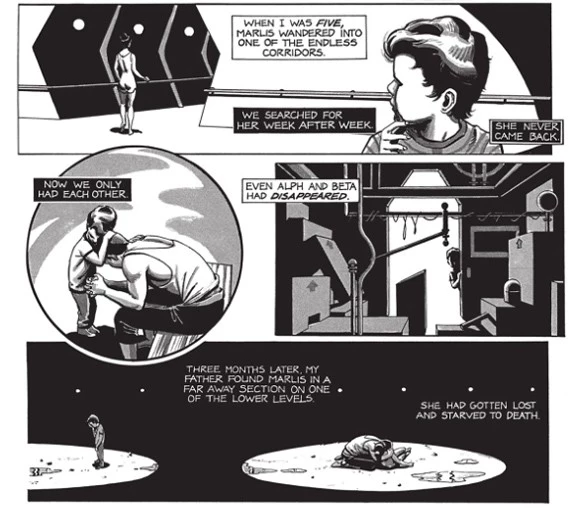








Nexus Omnibus volume 1 is on sale now in the Dark Horse/Things From Another World store as well as finer comics shops and bookstores, and is also available digitally from Dark Horse Digital. Volume 2 goes on sale in March.
More From ComicsAlliance
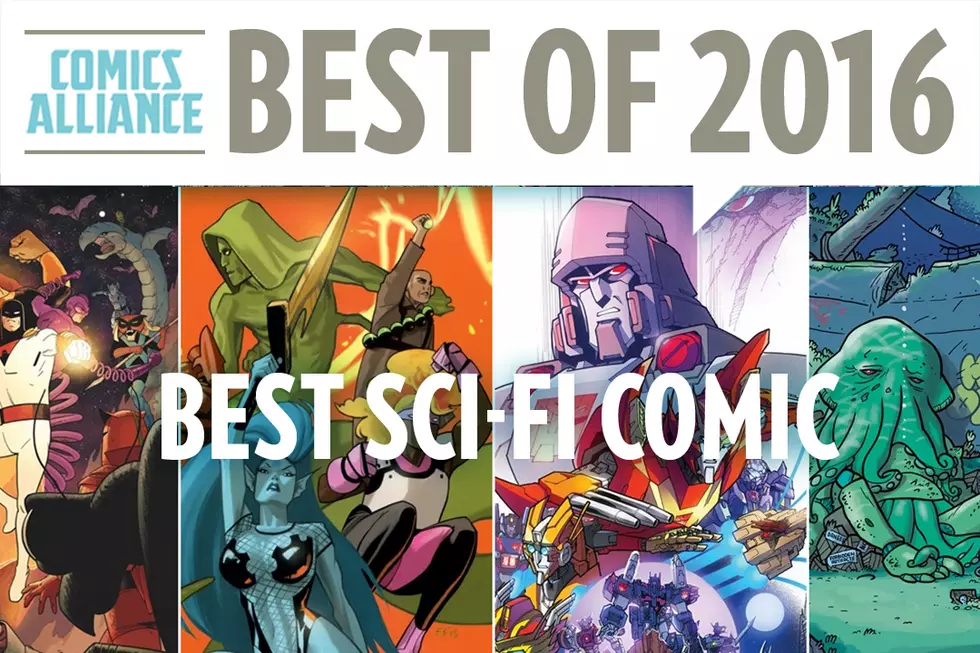


![DC Reveals Art And New Details For ‘Kamandi Challenge’ Tribute To Kirby [NYCC 2016]](http://townsquare.media/site/622/files/2016/10/Kamandi00.jpg?w=980&q=75)



![Steve Rude Covers ‘The Shield’ #2, And It’s Unsurprisingly Awesome [Preview]](http://townsquare.media/site/622/files/2016/01/Shield00.jpg?w=980&q=75)
![Nuclear-Powered Helicopter Action Is Finally Here In ‘Airwolf: Airstrikes’ [Preview]](http://townsquare.media/site/622/files/2015/09/Airwolf00.jpg?w=980&q=75)


